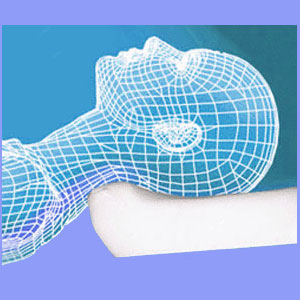
Finding a comfortable sleeping position for sciatica can be challenging for many chronic sufferers. Sciatica is known to strike at the most inopportune times, such as when trying to lie down in bed to get some much needed rest. If a patient can not sleep, then their pain will be ten times worse night after night. It is crucial to address the underlying source of most nighttime sciatica in order to find an effective and lasting solution to the nocturnal misery.
This article will detail why sciatica might recur nightly or only when sleeping. We will explore how to treat the various manifestation of sciatica which may be linked to positional scenarios exacerbated while reclining, as well as mindbody causations which may suffer escalation while asleep.
Finding a Sleeping Position for Sciatica
Virtually any pain should feel better when the body is at rest. Sciatica which comes on as soon as you relax in bed, or wakes you up during the night, is rarely sourced by a structural condition. In fact, these types of pain syndromes are almost exclusively of psychogenic origin. As you may know, psychosomatic sciatica is one of the more prevalent types of back and leg pain and is enacted by a mechanism known as ischemia. This process is also called oxygen deprivation back pain, although it can strike any soft tissues of the body.
Ischemia is worsened at night for 2 purely physical reasons. First is that the heart pumps far less blood than normal when the body is at rest and sleeping. Second, the horizontal positioning of the body when sleeping makes for decreased lower body blood flow and therefore less oxygen reaching the legs. This is why doctors tell people to elevate the legs to stop bleeding in lower body injuries. However, if linked to the mindbody processes, the reason why patients actually suffer the pain is likely to be related to emotional issues which worsen when the subconscious takes charge during sleep.
In a few instances, there may be purely structural reasons why pain escalates when reclining, based on positionally-sensitive parameters. These can usually be discovered and addressed by a physical therapist. If the symptoms occur regularly in a certain position, then this may be a valid explanation. However, if the patient feels good when lying down, but is awakened with pain during the night, the mindbody theory makes more sense.
Experimenting with Sleeping Positions for Pain Relief
For patients who are suffering from mindbody symptoms, the solution to finding a comfortable sleeping position is not what one might expect. Sure, they can try moving all over the bed, lying in every conceivable position. They might also attempt using a special mattress, pillow or blanket.
Some people sleep on their sides, with a pillow between their legs, while others insist on their stomach as the favored position. However, few if any, of these patients report complete relief from changing positions. In fact, it is typical for the pain to eventually take over no matter which position they attempt.
Instead of changing positions, try changing your life. For nighttime sciatica, knowledge therapy may be the way to go. You can read a tremendous amount of material on this treatment choice on this website, as well as in the renowned literary offerings of Dr. John Sarno from the NYU Medical Center/Rusk Institute of Rehabilitation Medicine in NY City.
Sleeping Position for Sciatica Experiences
Why do I recommend knowledge therapy for patients with psychoemotional causes of pain? That one is easy. The cure is simple to enact, free of risk and financial expenditure and has proven itself to be effective. You can read more about how I utilized it to enjoy relief by reading my own agonizing sciatica pain.
If you are suffering from mindbody nighttime sciatica and can not sleep, do not wait any longer or get hung up on any ridiculous combination of positioning, pillow and mattress firmness. This will not cure you and may only provide a temporary placebo effect at best. Instead, get to the root source of your pain. Defeat it once and for all and be able to sleep how and when you want.
However, this path of success is limited to helping patients without definitive structural causative issues. If a true spinal stenosis or pinched nerve condition is the actual root source of pain, then knowledge therapy will not provide many, if any, benefits at all. Unfortunately, changing the mattress, pillow or preferred sleeping position for sciatica, will not likely do much to resolve the suffering, either.
In these circumstances, the spinal issues will likely require professional treatment and if the diagnosis is correct, should respond favorably to this care. The challenge ahead of you is ascertaining which category you fit into and treating the condition as indicated.





